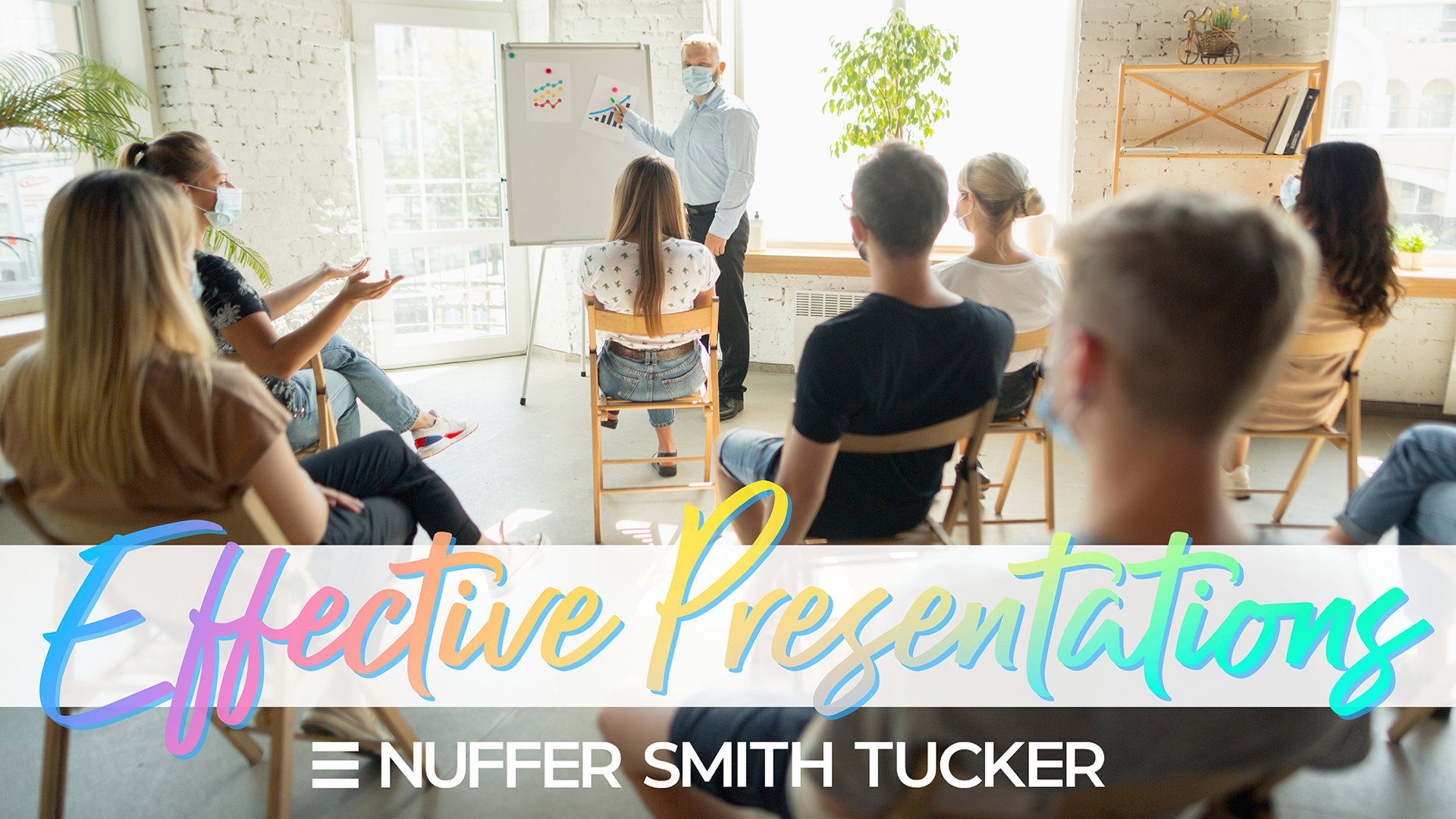The National Institute of Mental Health estimates that more than 73% of adults are affected by a fear of public speaking. Despite that figure, you can’t escape presentations in public relations – even in the digital age.
In fact, the digital age adds another layer of complexity. Meetings previously held in boardrooms and offices have moved online to living rooms and home offices through platforms like Zoom, which can make creating a meaningful connection with your target audience more difficult. While these digital tools have been effective in connecting teams worldwide, it can be challenging to give an effective presentation through a computer screen – especially when according to Albert Mehrabian’s Rule of Personal Communication 38% of an effective presentation is your voice, 55% is non-verbal communications and only 7% is your content.
Whether you’re presenting in a weekly internal touch-base, a bi-weekly client meeting or a more nerve-racking new business presentation – knowing your audience, engaging in proper preparation and having intentional goals can heavily influence your success.
Know Your Audience
If you work in communications, you know that not everyone communicates in the same way. In fact, there are three types of learning styles: audio, visual and kinesthetic, and it’s likely your presentation will have to appeal to all three of these learning styles.
According to Inc., Visual learners represent about 65% of the population and – you guessed it – absorb your presentation through pictures, graphs or on-screen text. Next are auditory learners, who listen closely to your every word to absorb the presentation’s content and make up 30% of the population. Then there’s the remaining 5% – kinesthetic learners, or tactile learners, who can be the hardest to connect with in the digital age.
Knowing who’s in your audience and how they will absorb your presentation can make all the difference – but it’s only the first step in the process.
Proper Preparation
Research, research, research! Ask yourself how well you know or understand the topic or concept you’re presenting. More than 90% of anxiety before a presentation comes from a lack of preparation – don’t set yourself up for failure. Once you know and understand the concept, message train yourself.
Knowing your key messages can make a huge difference in how you’re perceived during a presentation – but don’t just memorize them. More often than not, you will make a mistake during your presentation or get off track, and you want to be able to recover quickly. Preparing and knowing your key messages ahead of time makes for smoother transitions when these mistakes inevitably happen. And if it’s helpful, have a hidden outline on your computer screen to stay on track. We won’t tell.
Consider what you’re presenting and how you will present it and organize it in advance. Whether it’s an integrated marketing plan, social media strategy or a new business pitch, you’ll likely present a combination of facts, data, imagery and recommendations to tie your presentation together. If you can do so naturally, incorporate a story. Stories are memorable – so memorable that your audience is 22 times more likely to remember a fact when it’s been wrapped in a story.
But maybe the most important thing in the digital age is knowing how to work the technology – and testing it in advance of your presentation.
If you’ve done all the above, all you can do now is … practice, practice, practice!
Set an Intention
Why are you presenting? What do you hope to gain from this presentation? What does your audience want to hear or gain from the presentation? What questions should you anticipate? These are all important questions to consider when setting an intention.
Thinking through all the above questions can make your presentation more effective and meaningful to your key audience and can help ensure you’re presenting the most relevant information to arrive at your presentation goal.
If you’re interested in more advice on media training, mastering your presentations or just want to see our presentation skills in action – let’s talk.

